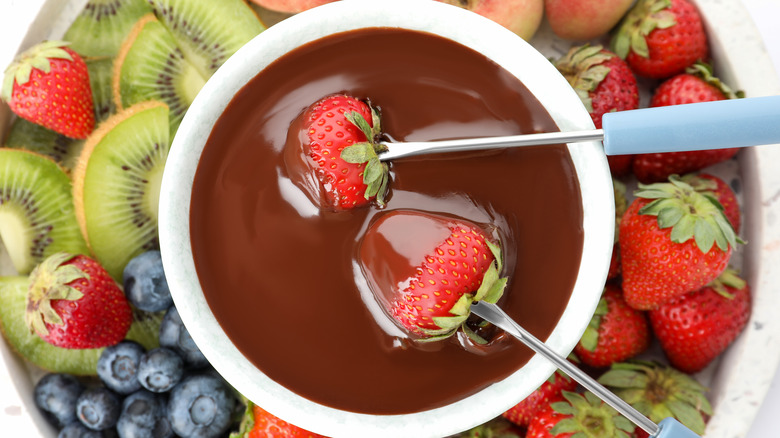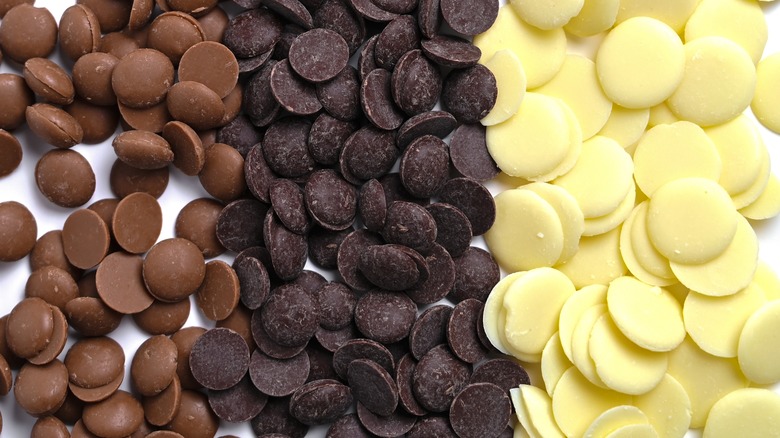The Best Type Of Chocolate To Use For Dipping
Admit it, you'll melt whichever bar of chocolate is stashed in your fridge for some chocolate-covered strawberries. That's okay, no one's going to judge you for it. But if the occasion calls for something more promising — something foolproof and guaranteed to garnish your strawberries with incredible luster fit for the 'gram and beyond — you'll need couverture chocolate.
Couverture is to chocolate dips what arabica is to coffee: the best quality to work with. It's what pastry chefs reach for when making high-quality desserts like truffles since it's the ideal chocolate type for tempering. All its goodness melts down to two things: how it's made and its composition. Since all chocolates contain cocoa butter and cocoa solids, what distinguishes couverture is its processing that gives extremely finely ground cocoa solids — that, and its high cocoa butter amount that exceeds that of baking and eating chocolates.
This makes couverture premium chocolate, all because its finer cocoa solid particles give couverture a smooth and creamy mouthfeel, while its higher cocoa butter ratio translates to chocolate that is easier to melt and more fluid, earning it a beautiful sheen. That's exactly what you're looking for in a chocolate for dipping: A fine chocolate that feels velvet-smooth and gives your desserts a flawless finish.
Alternatives to couverture chocolate
Put up against the plethora of chocolate types, couverture excels in texture and consistency, which is mostly owed to its cocoa butter content of over 30%. To put this into perspective, look at couverture vs compound chocolate. The latter can contain as little as 0% cocoa butter and use vegetable fat instead, making it inferior chocolate. In between those two is regular chocolate, which should contain at least 18% cocoa butter to be classified as such.
Interestingly though, compound chocolate is likely your best bet for replacing couverture when making chocolate for dipping. Compound is even known as "coating" chocolate because it's specifically made to do just that: coat desserts. Although a cheaper substitute due to its lack of cocoa butter, this also means it has a lower melting point, so you won't have to temper it before use like you would with couverture. Again, this makes it a better option than the slightly costlier regular chocolate, which you'd have to temper too.
That said, you won't get the dominant chocolate taste you get with couverture when you use compound chocolate, nor will you get a smooth mouthfeel but likely a waxy finish due to the large amounts of vegetable fat present. However, if you dare to tap into the powers of chocolatiering, melt regular (dark) with a bit of white chocolate for cocoa-strong dipping chocolate with a smooth texture that mimics couverture.

